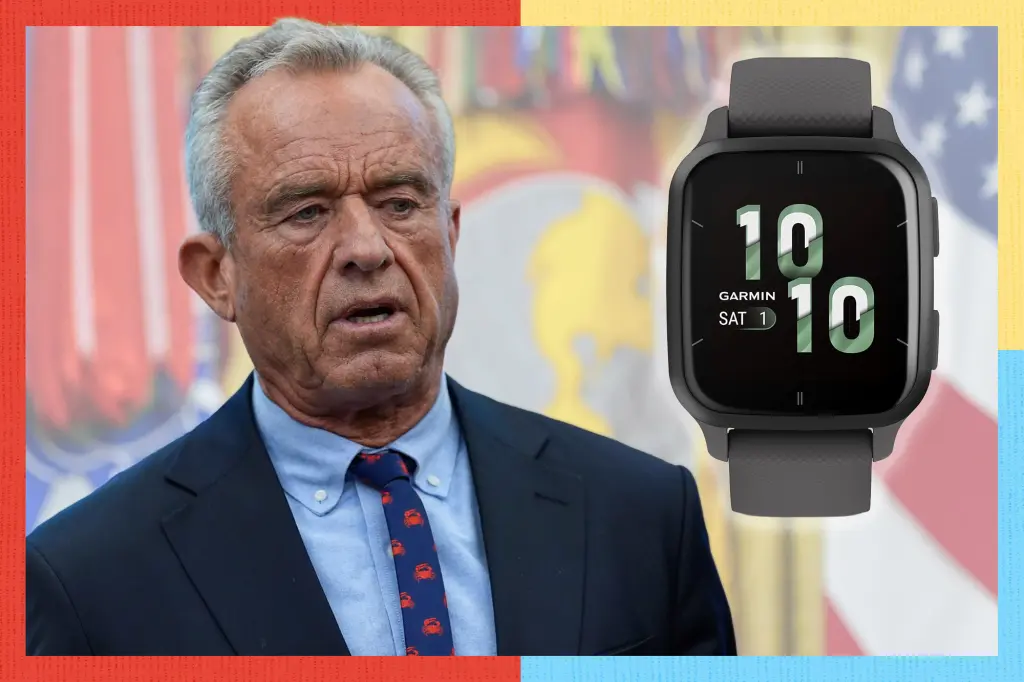The Wearable Tech Revolution: How Smartwatches Are Reshaping America’s Health
In a bold move that highlights the growing importance of technology in personal health management, Robert F. Kennedy Jr. recently unveiled a transformative vision for his “Make America Healthy Again” campaign. Speaking before a House subcommittee in June, the Secretary of Health and Human Services declared, “My vision is every American is wearing a wearable within four years. It’s a way of people taking control over their own health. They can take responsibility.” This ambitious goal comes at a time when wearable technology adoption is already on the rise, with approximately 21% of Americans using smartwatches or fitness trackers as of 2020—a figure that continues to grow steadily. Kennedy’s initiative represents more than just a policy proposal; it reflects a fundamental shift in how we approach health monitoring, moving from reactive healthcare to proactive wellness management through continuous personal data collection.
The power of today’s wearable technology extends far beyond simple step counting. Modern smartwatches from leading brands like Garmin, Apple, and Samsung function as comprehensive health laboratories on your wrist, monitoring everything from heart rate patterns and sleep quality to stress levels and blood oxygen saturation. Some advanced models have even begun tracking glucose responses after meals, providing unprecedented insights into how our bodies respond to our daily choices. This wealth of data allows users to identify patterns, make informed adjustments to their lifestyles, and potentially catch concerning health trends before they develop into serious conditions. The transformative potential of this technology lies in its ability to democratize health information, giving ordinary people access to biomarkers and health metrics that were once only available through occasional doctor visits or specialized medical testing.
Despite the clear benefits, one significant barrier to widespread adoption remains: cost. Premium smartwatches from top manufacturers can reach prices as high as $700, placing them out of reach for many Americans. Even entry-level options often require consumers to sacrifice advanced health monitoring features to achieve a more affordable price point. This accessibility gap threatens to create a two-tiered system of health monitoring, where more affluent populations benefit from advanced health insights while others are left behind. However, shopping events like Amazon’s Prime Big Deal Days present opportunities for consumers to acquire these powerful health tools at substantial discounts, potentially expanding access to this transformative technology.
The Garmin Venu Sq 2 GPS Smartwatch exemplifies the potential of wearable health technology at a more accessible price point, especially during sales events. Currently available for $100 off its typical $250 price tag during Prime Day, this sleek device combines an impressive 11-day battery life with comprehensive health monitoring capabilities. Its AMOLED display delivers vital information about heart rate, sleep quality, stress levels, and energy monitoring through what Garmin calls “Body Battery.” Built-in GPS functionality ensures accurate tracking during physical activities, whether walking, running, or cycling. The real-world impact of these features becomes evident in user testimonials, with one reporting an 8-pound weight loss simply from “being more aware of the need to be active,” while another described purchasing the smartwatch as the “best decision” they had ever made. These anecdotes highlight how continuous health data can motivate behavioral changes that lead to meaningful health improvements.
The wearable technology marketplace has expanded to accommodate various user preferences and needs. Apple Watches integrate seamlessly with iPhones, offering a familiar ecosystem for Apple users while providing sophisticated health monitoring tools. Fitbit devices, long known for their user-friendly interfaces, provide an approachable entry point for those new to health tracking. Meanwhile, Garmin continues to offer more rugged options designed specifically for outdoor enthusiasts and serious athletes who require durability along with advanced metrics. This diversity of options ensures that consumers can find wearable technology that fits their lifestyle, aesthetic preferences, and specific health goals. The timing of sales events like Prime Big Deal Days aligns perfectly with what fitness experts call “October Theory”—the idea that beginning health initiatives before the holiday season and New Year creates more sustainable habits and results.
As wearable technology continues to evolve and become more accessible, we stand at the threshold of a potential revolution in how Americans manage their health. Kennedy’s vision of universal wearable adoption represents a fundamental shift from a reactive healthcare system focused on treating illness to a proactive approach centered on prevention and personal responsibility. While privacy concerns and questions about data security remain important considerations, the potential benefits of widespread health monitoring are substantial—from early detection of heart irregularities to encouraging more active lifestyles through awareness and goal-setting. As Prime Big Deal Days and similar sales events make these devices more affordable, more Americans have the opportunity to join what could become a nationwide movement toward tech-enabled health management. Whether this vision will be fully realized within Kennedy’s four-year timeline remains to be seen, but the foundation for a healthier, more informed America is being laid one wrist at a time.













